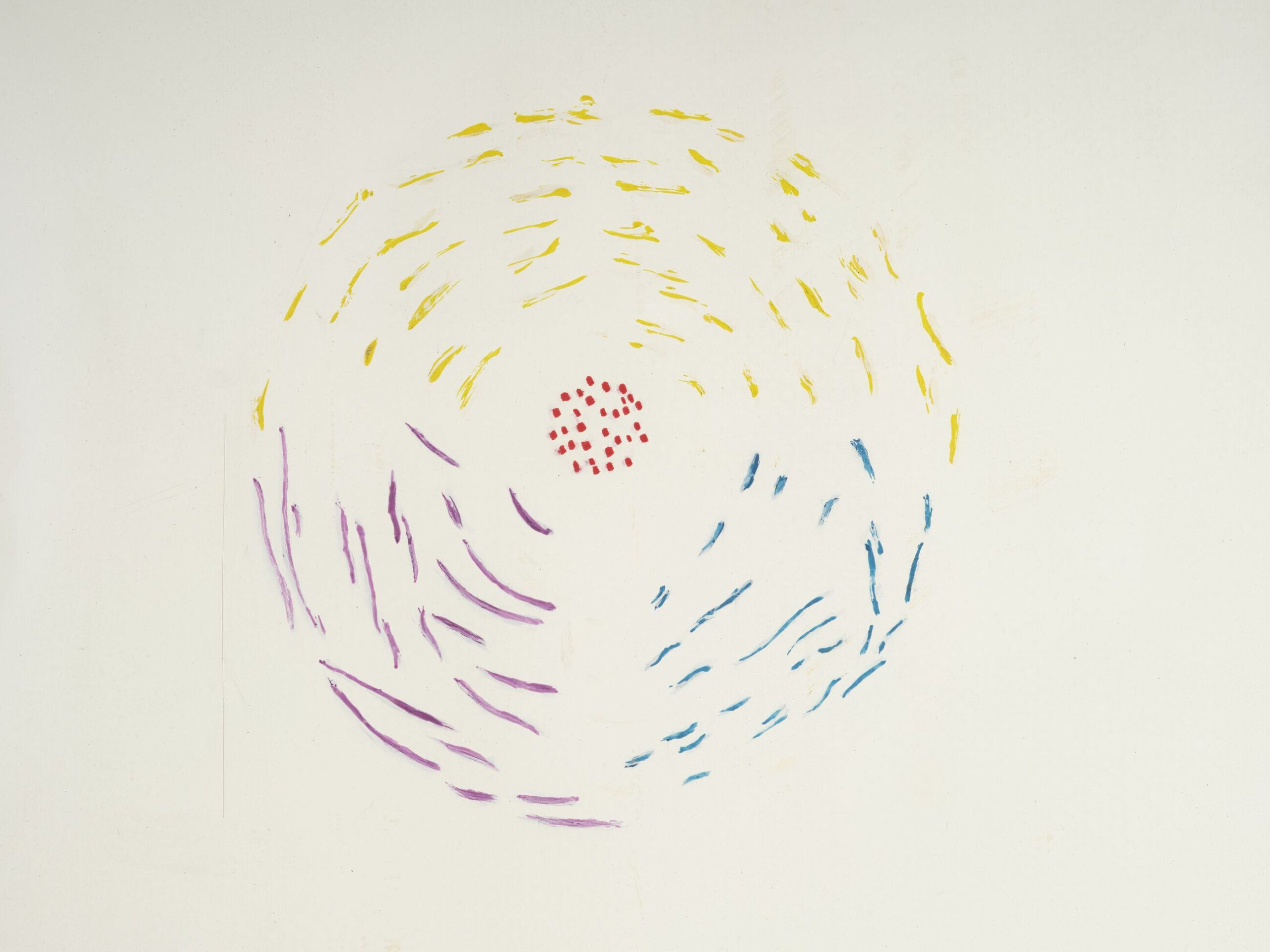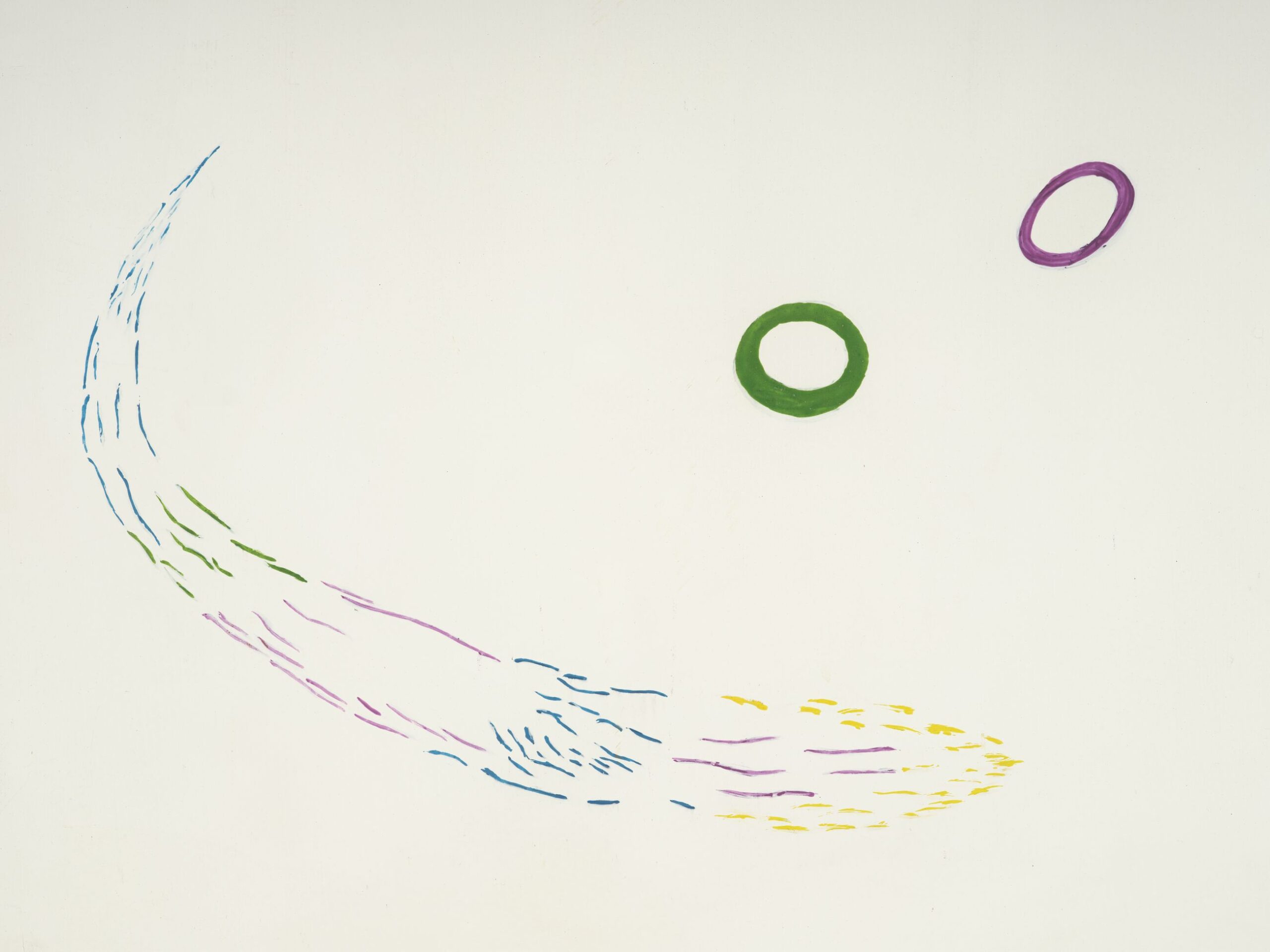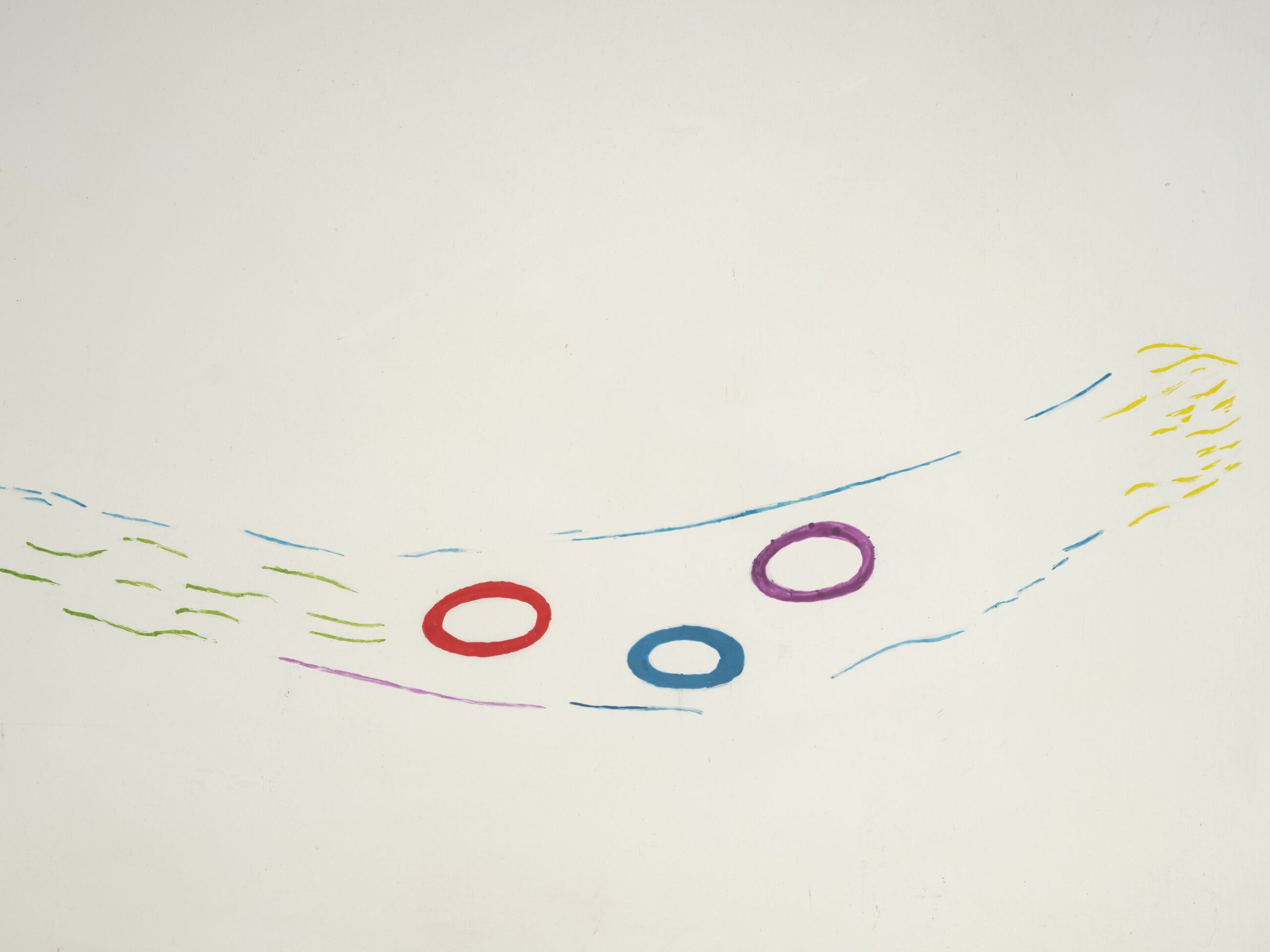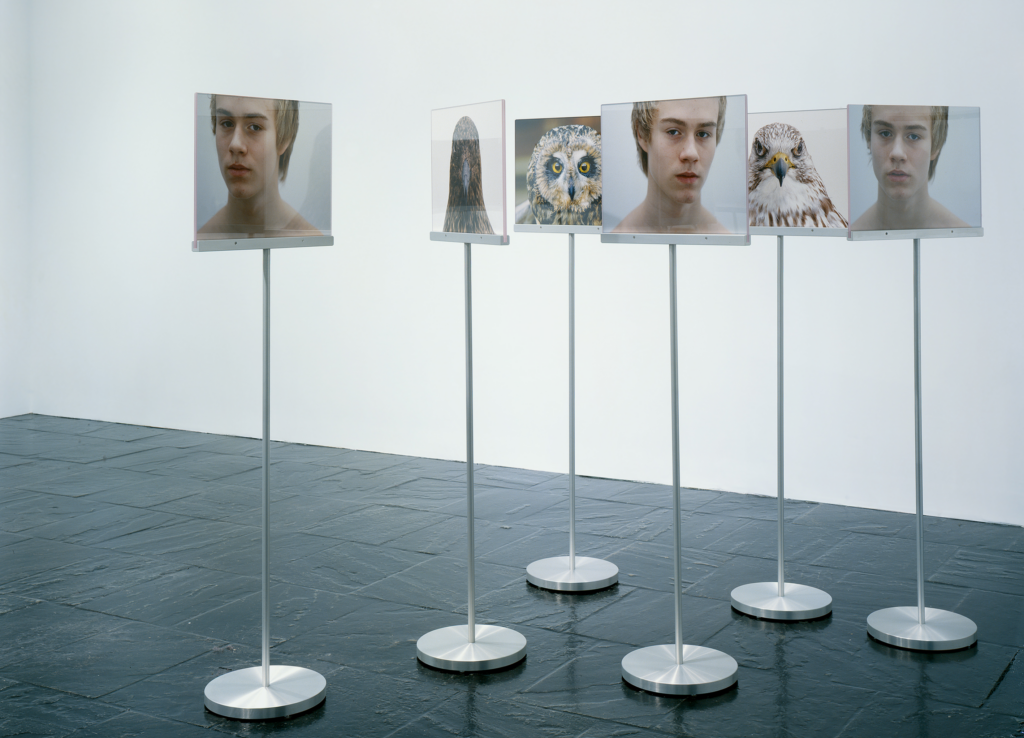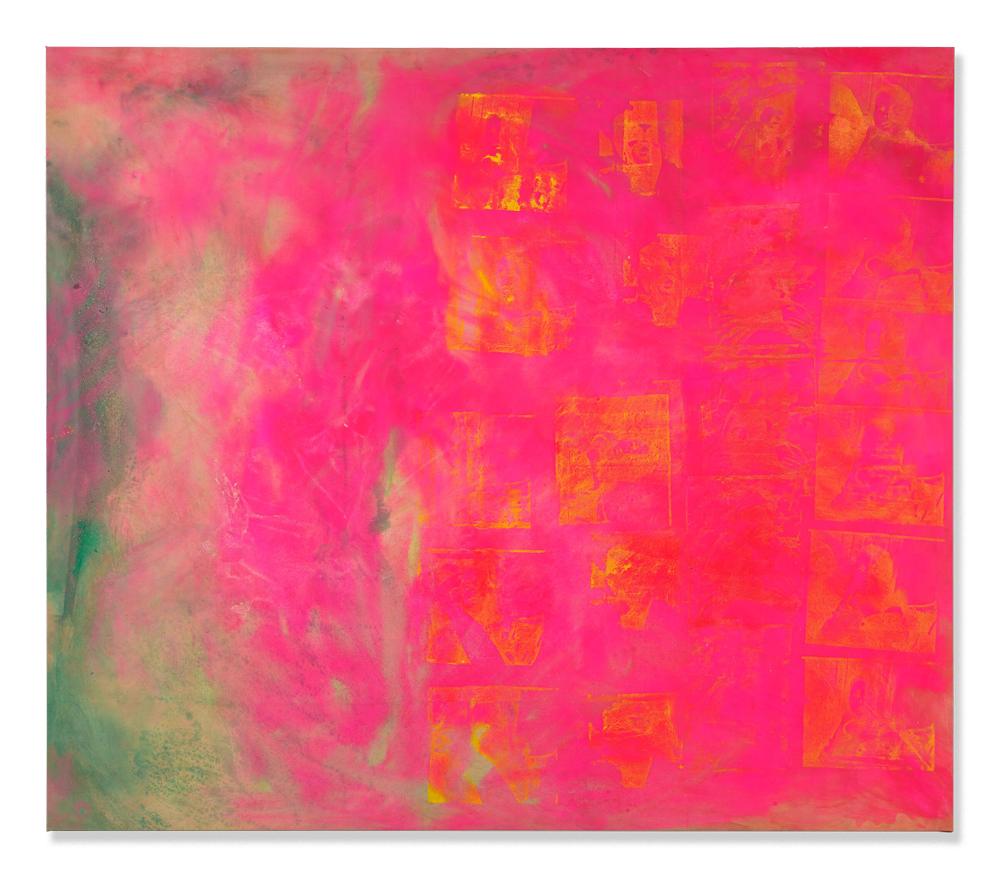With its delicate lines and masterful application of color, ‘Radiation’ (1949) is a consummate example of Georges Vantongerloo’s enchantment with the invisible and his attempt to formulate a modern visual language. Born in the age of the paraffin lamp, Vantongerloo experienced a reality wholly redefined by scientific discovery, the developments in atomic physics and cosmology, and the technological progress that laid the groundwork for the space race. The artist was inspired and invigorated by these discoveries as well as by what remained unknown.
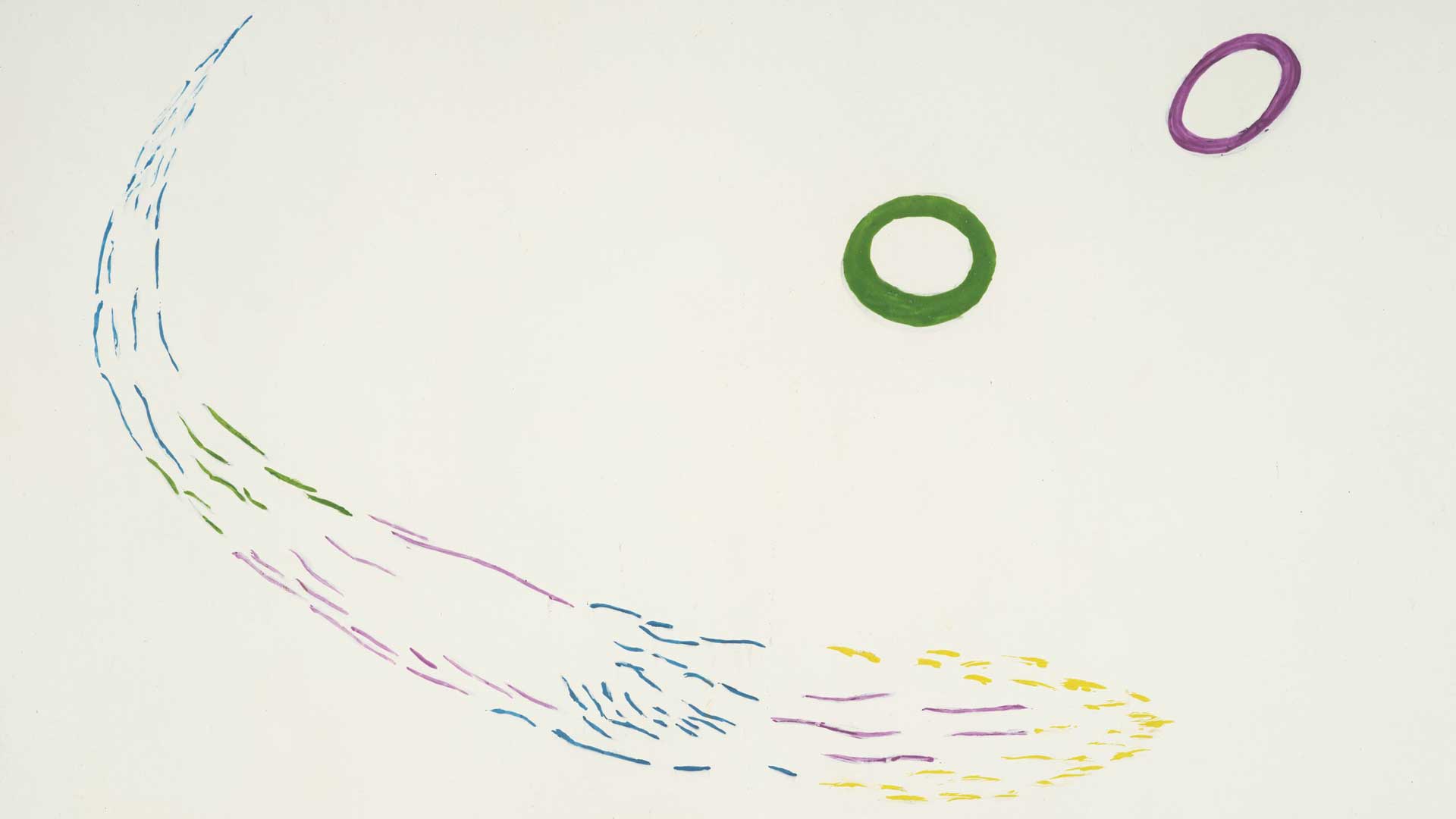
Vantongerloo’s oeuvre metamorphosed as it grappled with the ever-shifting phenomenological effects of these ongoing findings. Significant paintings like ‘Radiation’ evince a lifetime of aesthetic, personal and intellectual development. They also encapsulate a lifelong goal: to render the invisible visible, to translate the universe on the artist’s own aesthetic terms. ‘Radiation’ embodies what the artist’s close friend Max Bill described as Vantongerloo’s ‘quest for relationships for [sic] structure and universal colour values.’ [1] ‘Radiation’ is exemplary of their unique bond—the work remained in Bill’s personal collection throughout his life.
‘As matter is transformable, energy is also transformable, but not always measurable by our means. The universe is neither finite nor infinite; immeasurable, it is energy formed by unlimited energy.’
—Georges Vantongerloo [2]
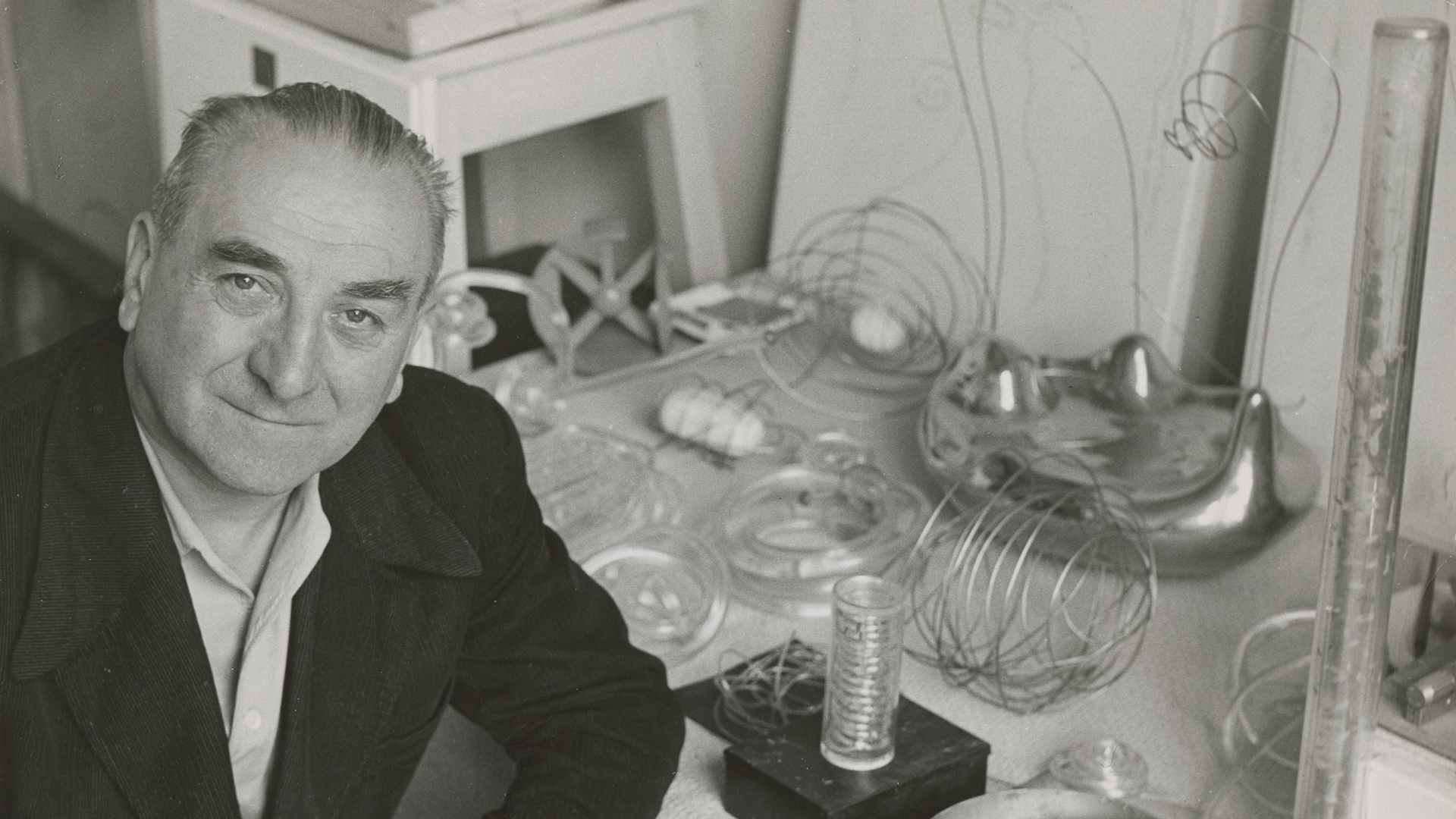
About the artist
Georges Vantongerloo (1886 1965), born in Antwerp, Belgium, was a sculptor, painter, architect, designer and theorist. Working across a variety of mediums as a member of some of the most important avant-garde groups of the 20th Century such as Cercle et Carré and Abstraction-Création, Vantongerloo’s artistic language became a pioneering and ever-evolving force in the history of modern art. After making innovative abstract sculptures and paintings as a member of De Stijl, in the 1930s Vantongerloo developed concrete compositions with simplified, undulating lines that gently and playfully materialise through an interplay of color, light and transparency. These works—intense and exuding energy—exerted great influence, especially on Latin American artists and the development of concrete art.
Artwork images © 2023, ProLitteris, Zurich. Photo: Jason Klimatsas
Georges Vantongerloo in Paris, 1951 © 2023, ProLitteris, Zurich. Photo: Reinhart Wolf
[1] Max Bill quoted in Guy Brett, Yve-Alain Bois, Gutemie Maldonado (et al.), ‘Georges Vantongerloo. A Longing for Infinity’ (Madrid, Spain: Museo Nacional Centro de Arte Reina Sofia, 2009), p. 168.
[2] Georges Vantongerloo quoted in Guy Brett, Yve-Alain Bois, Gutemie Maldonado (et al.), ‘Georges Vantongerloo. A Longing for Infinity’ (Madrid, Spain: Museo Nacional Centro de Arte Reina Sofia, 2009), p. 208.





